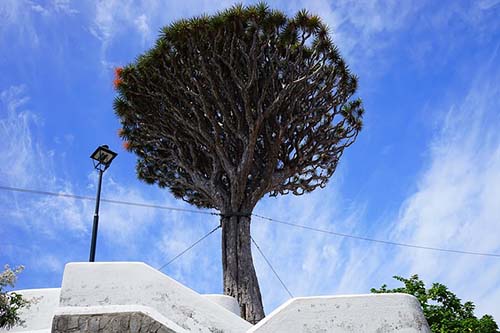Mansfield Tree Cabling & Bracing

Tree Cabling & Bracing in Mansfield
Tree cabling and bracing is the method of installing slightly flexible steel cables and braces in trees to help ease the stress related to extreme swaying in high winds, the weight of the tree’s dense foliage, and the weight of snow or ice. This process is especially beneficial in areas where severe weather is frequent.
Inputting tree cabling and bracing provides supplemental structural support for the tree. This limits the amount of movement during severe weather, so the tree’s branches are less likely to crack, fall off, and cause damage to the rest of the tree or your property. Cabling and bracing a tree is similar to wearing a cast after you’ve broken a bone. Limiting movement helps the bone heal quickly and correctly, just like a tree needs to restrict movement to keep its branches from falling off.
How to Know if You Need Tree Cabling and Bracing
Quite simply, you don’t. To the untrained eye, determining whether or not you need to cable and brace your tree is not always clear. Mansfield Tree Service Pro expert arborists are skilled to notice trees that might need cabling and bracing and experienced in installing the necessary cables and braces. We’ll come to inspect and evaluate your trees to see if cabling and bracing is the right solution for you. Tree bracing and cabling are typically used together to provide maximum support to even the most damaged trees.
Common Structural Problems
Our professional arborists are experienced in recognizing the most common structural problems in trees. Upon inspection, our crew will decide if cabling and bracing is the right option for you. Three of the most common types of structural problems include:
- Co-dominant Stems
As the name suggests, co-dominant stems try to dominate the same base they grow from. It isn’t always a bad thing, but it is important to inspect the shape of the union. “U” shapes are not usually a cause for concern, but just in case, our team will look at it as well. “V” shapes are typically a cause for concern, but our crew will thoroughly check it to determine if it will potentially create problems.
2. Cavities
Weak points in trees tend to be holes in branches, limbs, or trunks, which often need to be looked over carefully. Cavities can appear for any number of reasons, and sometimes it has nothing to do with lack of proper tree care. Cavities can be caused by cold weather, high-traffic insect entry points, or old pruning wounds (which is easy to avoid with Mansfield Tree Service Pro).
3. Cracks in Branch Unions
There are two common types of branch unions. Strong branch unions and weak branch unions. Strong branch unions are usually “U” shaped and has sturdy connections that are unlikely to cause problems. Weak branch unions are generally “V” shaped and have the potential to lead to weakened limbs that could crack, fall, or damage other parts of the tree or surrounding areas of your landscape. Our team will take the time to correctly assess your trees to ensure we’re only suggesting necessary services.
Tree Cabling
Tree cabling is used most often to provide support in the upper canopy for trees that have a type of structural weakness.
There are two types of tree cabling:
1. Static Cabling
- Uses the highest strength steel cables that offer no leniency
- Restricts all movement or swaying of the upper canopy
- This method is usually used to provide supplemental support or repair in trees that have existing problems
2. Dynamic Cabling
- Allows sufficient movement as the tree moves with the wind
- Uses a slightly more elastic type of braided steel cable
- This method is commonly used as a preventative measure
Tree Bracing
Tree bracing is much more invasive than cabling and is more often installed in the lower portion of the tree, rather than the canopy. It reinforces any faults or flaws in the tree’s structure, including:
- Cracked trunks
- Holes and cavities
- Split unions
- Weak branch attachments
- Ingrown bark

